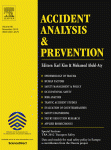
The objective of this paper is the analysis of the state-of-the-art in risk indicators and exposure data for safety performance assessment in Europe, in terms of data availability, collection methodologies and use. More specifically, the concepts of exposure and risk are explored, as well as the theoretical properties of various exposure measures used in road safety research (e.g. vehicle- and person-kilometres of travel, vehicle fleet, road length, driver population, time spent in traffic, etc.). Moreover, the existing methods for collecting disaggregate exposure data for risk estimates at national level are presented and assessed, including survey methods (e.g. travel surveys, traffic counts) and databases (e.g. national registers). A detailed analysis of the availability and quality of existing risk exposure data is also carried out. More specifically, the results of a questionnaire survey in the European countries are presented, with detailed information on exposure measures available, their possible disaggregations (i.e. variables and values), their conformity to standard definitions and the characteristics of their national collection methods. Finally, the potential of international risk comparisons is investigated, mainly through the International Data Files with exposure data (e.g. Eurostat, IRTAD, ECMT, UNECE, IRF, etc.). The results of this review confirm that comparing risk rates at international level may be a complex task, as the availability and quality of exposure estimates in European countries varies significantly. The lack of a common framework for the collection and exploitation of exposure data limits significantly the comparability of the national data. On the other hand, the International Data Files containing exposure data provide useful statistics and estimates in a systematic way and are currently the only sources allowing international comparisons of road safety performance under certain conditions.
| ID | pj81 |
| Manuscript | |
| DOI | |
| Tags | information systems, statistical modelling |







